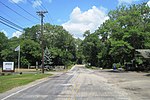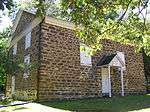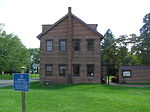WWJZ
WWJZ (640 AM) is a radio station licensed to Mount Holly, New Jersey, serving Philadelphia and the Delaware Valley. The station airs catholic–talk radio programming and is owned and operated by Relevant Radio.The station's transmitter is located near the intersection of U.S. Route 206 and CR-530 in Pemberton Township, New Jersey, and station offices are in Fort Washington, Pennsylvania. WWJZ operates with 50,000 watts in the daytime, the maximum permitted for AM stations by the Federal Communications Commission. But because 640 kHz is a clear-channel frequency, WWJZ must reduce power to 950 watts at night to avoid interfering with other radio stations such as KFI 640 in Los Angeles, California and CBN in St. John's, Newfoundland and Labrador, Canada which are dominant Class A radio stations on 640 AM in the United States.
Excerpt from the Wikipedia article WWJZ (License: CC BY-SA 3.0, Authors).WWJZ
North Pemberton Road,
Geographical coordinates (GPS) Address Nearby Places Show on map
Geographical coordinates (GPS)
| Latitude | Longitude |
|---|---|
| N 39.996944444444 ° | E -74.719722222222 ° |
Address
WWJZ-AM (Mount Holly)
North Pemberton Road
08068
New Jersey, United States
Open on Google Maps






